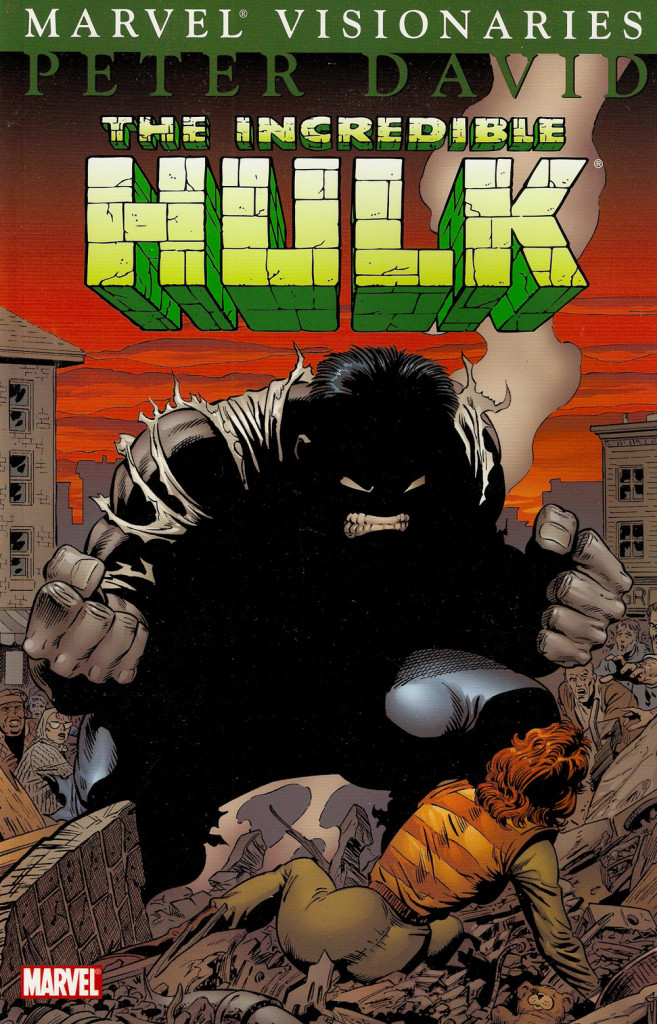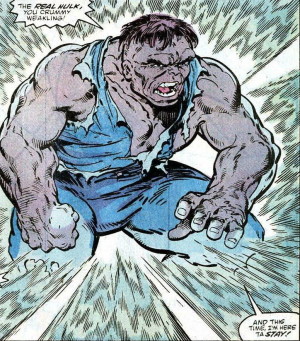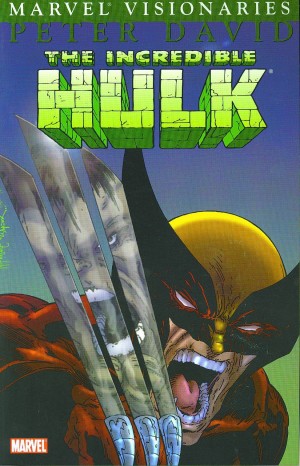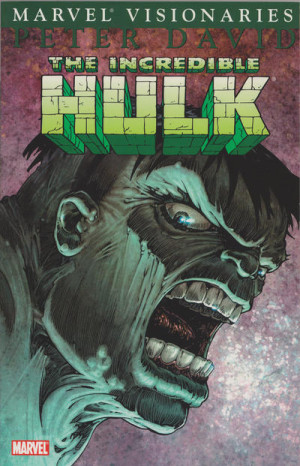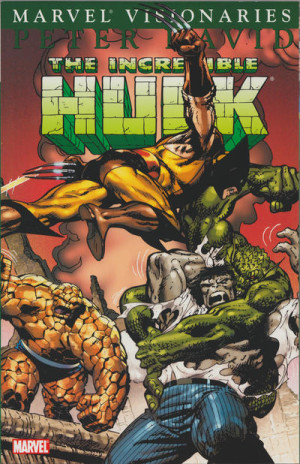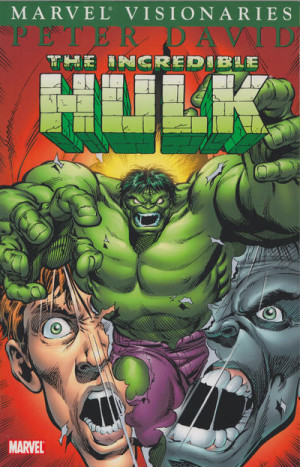Review by Karl Verhoven
Until Peter David began writing The Incredible Hulk in 1987, the green goliath had proved a troublesome character. Stan Lee’s initial idea of the tragic man transformed into a mindless monster was the only early Marvel title to suffer the ignominy of cancellation. A revived strip established Bruce Banner and his alter-ego, but the basic problem remained: if your lead character is a near mindless rampaging beast, then the supporting cast have to carry the strip. Numerous notable creators over the years sustained publication, but couldn’t really solve that conundrum. Ironically, the limitations of his comics made the Hulk ideally suited to TV drama.
David has a vision from the start, but first has to clear up the plots of his predecessor. To his credit, he doesn’t just take an eraser to the insipid Hulkbusters, or the misguided idea of turning Rick Jones into a second Hulk, but deals with his bequest respectfully. However, mistakes are made. David returns Betty Banner’s first husband, the sleazy Ramon, but as a caricature, and the less said the better about the gamma irradiated English professor (“Call me Ishmael. Or Half-Life, whichever you prefer!”).
In his very first appearance the Hulk was grey, not green, and possessed a rudimentary anger-fueled intelligence beyond “Hulk smash!”. By the end of the opening chapter David’s restored this Hulk, and fed the device into a plot dealing with other gamma-irradiated characters undergoing a depletion in their abilities. As well as being a startling plot device at the time, it created a more sustainable lead character.
What also greatly helped was that David was matched with in-place artist Todd McFarlane. McFarlane already had several years of drawing comics behind him, but lacked individualism. That develops over the course of this book. He starts with okay layouts, and solid figures, but develops the basis of what would become his signature look. Going against the grain, McFarlane started adding more and more lines to his art, not to disguise a basic deficiency as some artists of the period did, but as a method of developing a distinctive look. How much he brings to the material is apparent via a guest shot from John Ridgway, whose roots are more in classical illustration. The pages look fine, but there’s little power to Ridgway’s Hulk.
Elsewhere in the collection David provides a little in-joke by pitching X-Factor against the Hulk in the printing plant that handled Marvel’s monthly production output, introduces some pro-active assisted suicide and picks up on a seemingly forgotten plot introduced years previously by Bill Mantlo. He posited that the roots for the gamma radiation transforming the scientist Bruce Banner into a mountain of rage lay in an abused childhood. It’s an idea David will work with at length.
McFarlane looked at the world around him rather than illustrating standard people, so mullets, moustaches and vests are common, now dating what was then contemporary. David’s writing style is also relatively primitive. Word balloons and thought balloons abound, and he’s unable to let a smart comment go for the greater good of the plot, but something’s stirring, and it comes to fruition in Volume 2. Or in the earlier collection Ground Zero.
David’s first four Visionaries collections are combined as The Incredible Hulk by Peter David Omnibus Vol. 1.
